We're an affiliate
We hope you love the products we recommend! Just so you know, we may collect a share of sales or other compensation from the links on this page at no additional cost to you. Thank you if you use our links, we really appreciate it!
German Shepherds Dogs (GSDs) are one of the world’s most popular dog breeds known for their dedication to work and steadfast loyalty to their human handlers.
This dog breed is a perfect embodiment of intelligence, sheer hard work, and resilience. It’s no wonder they are still used by authorities in search and rescue missions.
Keep reading this comprehensive guide to discover everything you need to know about the German Shepherd Dog breed, from their history to their stunning looks and desirable protective nature.
Brief History of German Shepherd Dogs
The century-old history of German Shepherd Dogs began in Germany in the year 1899 during a dog show event.
It all began when Captain Max von Stephanitz got fascinated by a working breed dog known as Hektor Linksrhein at the event.
Captain Stephanitz was so blown away by Hektor’s intelligence, physical quality, obedience, and beauty that he had to purchase him after the show.
The captain changed the dog’s name to Horand von Grafrath, and he believed that he embodied what he considered the perfect working dog.
Max von Stephanitz named the breed ‘Deutscher Schäferhund’, which translates to ‘German Shepherd Dog’.
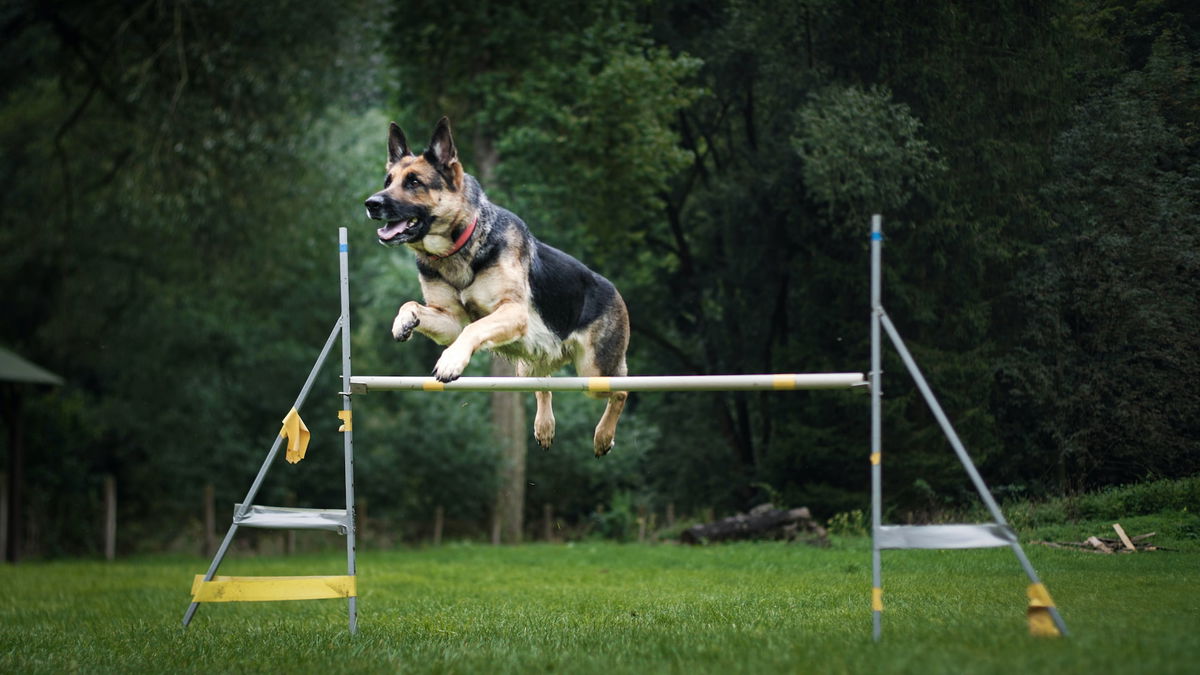
The dog was a product of selective breeding from traditional German herding dogs. Stephanitz founded the Verein für Deutsche Schäferhunde, or ‘the Society of German Shepherd Dogs.
Horand was later crossed with other dogs from registered societies that possessed desirable physical traits and mental soundness.
This resulted in what we know today as ‘German Shepherd Dogs’ and they were widely used by shepherds to assist in herding and protecting their flock.
It wasn’t until 1919 that the UK Kennel Club registered GSDs as a distinctive breed, even though their counterparts in America (AKC) had registered this breed ten years earlier in 1909.
Returning soldiers and servicemen from the First World War spoke highly about these workaholic dogs which greatly increased their popularity across the world.
The present-day German Shepherd Dog has become one of the most popular dog breeds across the world, thanks to their strong work ethos, resilience, loyalty, and versatility.
5 Fascinating Facts About German Shepherds
1. German shepherds are among the most intelligent dog breeds
German Shepherds are regarded as one of the smartest dog breeds in the world, thanks to their selective breeding history.
They have an outstanding ability to learn new commands and tricks without needing too many repetitions.
The impressive mental knack of GSDs makes them an excellent choice for working as service dogs and in search and rescue teams.
2. German Shepherds were once called ‘Alsatians’ in Britain
The end of World War II came with significant anti-German sentiments across the globe, which saw UK breeders rename the GSD to Alsatians.
This name was widely used across the UK until the year 1977 when they reverted the name to German Shepherd Dog.
3. German Shepherds are movie stars
You may think that Hollywood’s Walk of Fame is only for humans and not our four-legged companions, but GSDs are here to prove their worth.
Dog war veterans Rin Tin Tin and Strongheart were canine film stars who made it into dozens of movie appearances.
4. German Shepherds are strong and agile
These dogs were originally used to assist shepherds in herding sheep, a working trait that required a strong muscular build.
5. German Shepherds are not inherently dangerous
Despite their versatile roles in police and military work, GSDs do not have an inborn attribute of being dangerous or naturally aggressive.
The servicemen have capitalized on desirable German Shepherd traits such as intelligence, strength, stamina, and versatility, which makes them a perfect choice for intensive working roles.
A well-trained and socialized German Shepherd Dog is extremely friendly and they can certainly make great household pets.
German Shepherd Puppies
Welcoming a new German Shepherd puppy into your home is a wonderful experience that can be worthwhile and yet challenging for some people.
German Shepherd puppies are lively and full of energy, which makes them an irresistible choice for people looking for amazing family pets.

These youngsters would typically need lots of attention and interaction from their human caregivers to keep them well-balanced throughout the day.
Owning a German Shepherd puppy comes with its share of responsibilities including providing a rewarding environment and socializing them from an early stage.
Doing the right thing for your young GSD will make them grow into becoming responsible adults who know their boundaries and with inbuilt confidence in the presence of strangers.
German Shepherd Types
1. West German Working Line German Shepherd Dog
Working line German Shepherd dogs are bred for their robust physical strength and they enjoy undertaking hard work.
These dogs have a high energy drive which pushes them to work within the range of 2 – 4 hours every day without getting drained.

The West German working line German Shepherd Dog is widely regarded as the closest offspring of the original GSDs developed by Max Von Stephanitz.
This is because they possess an impressive personality and unparalleled work ethic to get the job done without winking.
These workaholic dogs are slightly smaller than their show-line counterparts and they have a blended coat pattern that sets them apart.
2. East German Working Line German Shepherd Dog
The Deutsche Demokratische Republik (DDR) or East German working-line GSDs show striking similarities from their counterparts in West Germany.
These dogs were selectively bred for their high work ethic and ability to function as guard dogs. They sport a bigger head and broad shoulders compared to similar working line breeds.
Breeders of the East German working-line GSDs were heavily regulated in the past because the governing society wanted them to produce a nearly perfect purebred German Shepherd dog.

It’s for this reason that these canines have a beautiful coat with a shiny physical appearance and well-made bodies.
These hardworking pups were an excellent choice during World War II, thanks to their sheer strength, mental competence, and stamina to tackle difficult terrain.
To date, the East working-line GSDs are often used as military dogs, guard dogs, police dogs, and in search and rescue operations.
3. Czech Working Line German Shepherd Dog
These working-line GSDs came as a result of the communist reign in Czechoslovakia, where they were used to patrol the borders.
The Czech working-line German Shepherds are renowned for their strong work ethic, bravery, speed, and ability to complete physically demanding tasks without losing motivation.
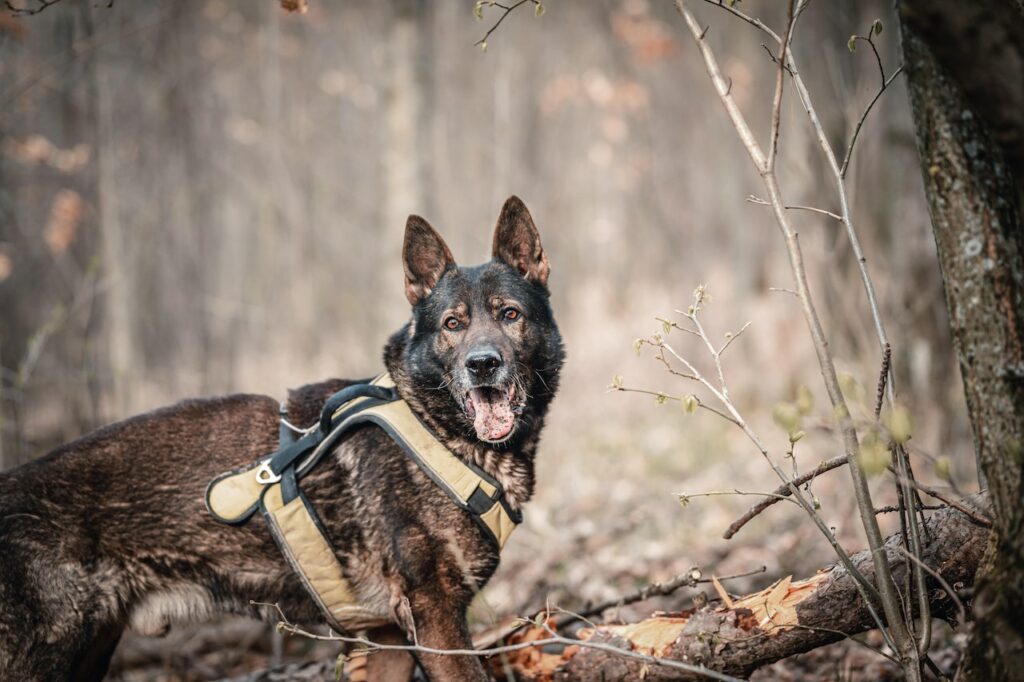
The East German Shepherds, who were previously subjected to heavy breeding regulations, were used to breed the Czech line.
Due to the further tightening of breeding regulations, Czech working line GSDs are arguably the most powerful and well-rounded type of German Shepherd dog today.
Most of the workaholic GSDs from the Czech have sleek and shiny darker coats, with strong, rigid, and balanced wolf-like bodies.
4. American Show-line German Shepherd Dog
The American show-line German Shepherd dogs are bred per AKC’s standards for their striking looks in dog show competitions across the USA.
The show-line dogs became popular during the early 20th century when GSDs won a dog show competition. There was an upsurge of people who needed German Shepherds for household pets.
AKC recognized American show-line German Shepherds who are tan or black. Any other color variation is not recognized as per their breeding regulations.
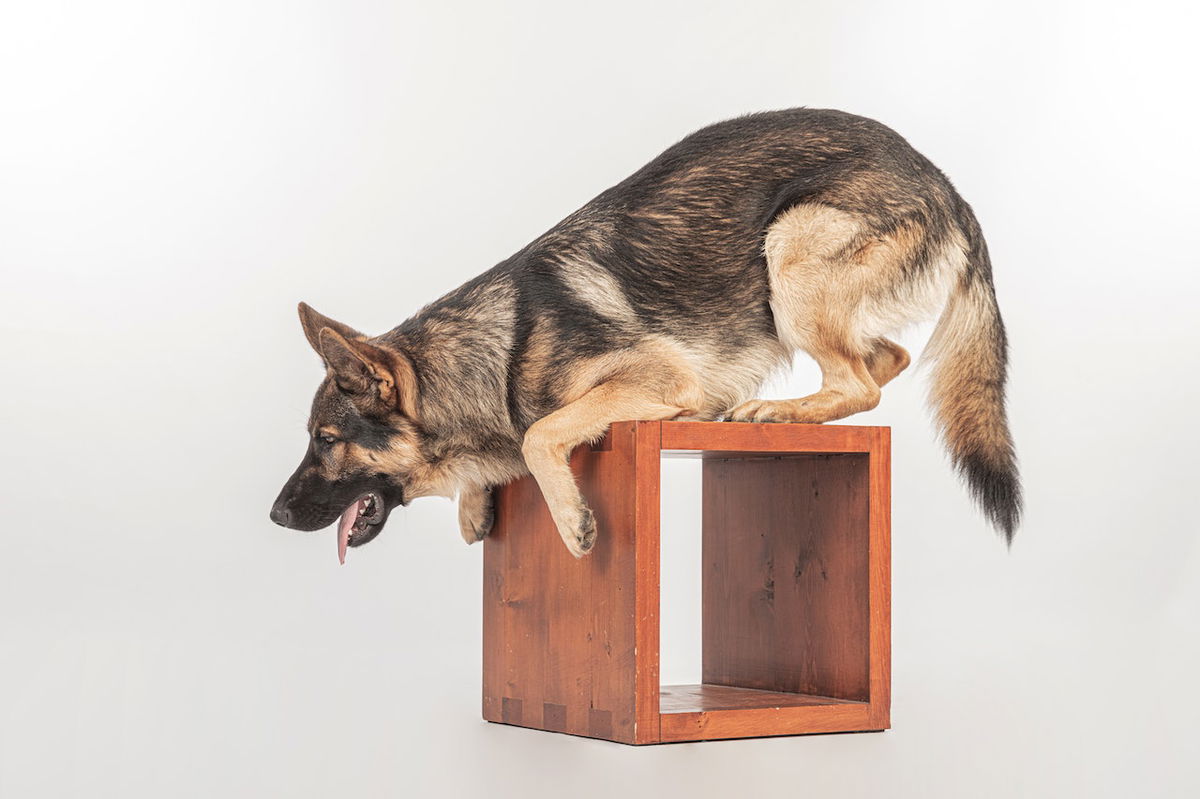
These show-line GSDs are typically stockier and have longer hooks with a more roached back. Their underbelly and chest area are also thick enough to be noticed.
Whereas GSDs are naturally inclined to perform well in various roles, the show-line variants are not as physically active as their working-line counterparts.
American show-line GSDs are therefore suited for people who need a loyal and intelligent companion without the stamina to take part in vigorous physical activities.
5. European show-line German Shepherd Dog
Just like the American ones, the European (West German) show-line GSDs are bred for their stunning looks and physical appearance in dog competitions.
However, European show-line German Shepherds can offer more than an appearance. These dogs are known to take part in functional tasks outside the competition arena.
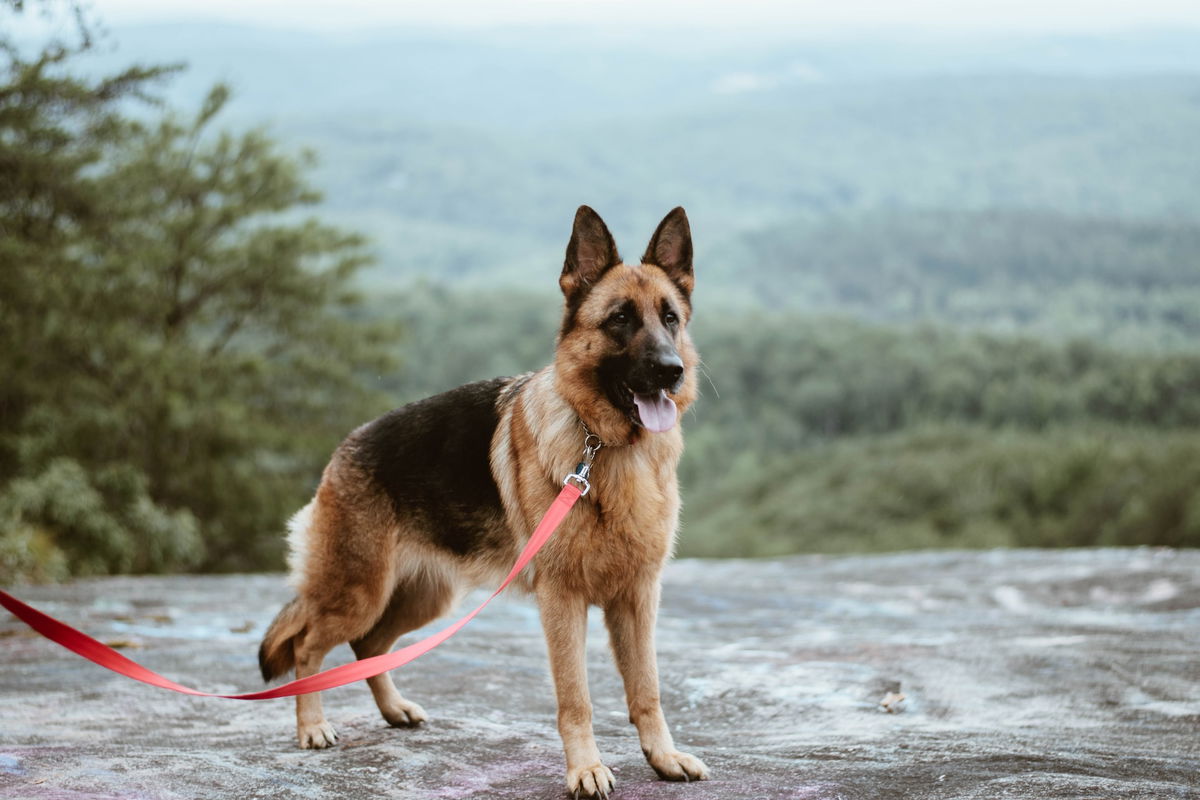
These dogs are less robust and smaller than their American/Canadian counterparts and they have a much straighter back.
The most common color of the European show-line GSDs is black and red.
German Shepherd Physical Characteristics
Size and weight
German Shepherds are considered medium to large size dogs. The males stand at 24–26 inches from the ground while the females have a height range of 22–24 inches.
A fully grown German Shepherd male dog weighs between 75 – 90 pounds while females fall within the range of 55 – 70 pounds.
Coat colors and texture
The German Shepherd coat is very versatile in terms of color, texture, and length. The color can range from solid black, tan, brown, red, sable, and a combination of different patterns.
German Shepherds have a weatherproof coat that keeps them insulated from harsh climatic conditions when performing outdoor duties.
The coat is made up of a dense and softer undercoat and a wavy topcoat. The genes for long hair are recessive in GSDs making it hard to find one with long fur.
Distinctive features
One of the top distinctive features of GSDs has to be their wedge-shaped head which is large but proportional to their body. They also have a strong jaw with a long muzzle and a black square nose.
German Shepherds have medium-sized dark eyes with an almond shape. This gives them an expression full of life, eagerness, and impressive mental acumen.
You can’t fail to notice the erect ears of GSDs. These triangular-shaped ears usually begin to stand erect when the puppy is about four months old.
The erect ears are a testament to the German Shepherd’s alertness and attention to detail especially when performing heavier tasks.
Finally, German Shepherds have bushy tails that usually reach their hock joints. The tail often stands straight when they are ready to act or excited, and this adds to their dignified appearance.
German Shepherd Temperament and Personality
Among many traits, German Shepherd dogs are recognized for their unwavering loyalty, confidence, and instinctual protective nature.
These workaholic canines are known to form strong emotional bonds with their human families and they can also go from their comfort zones to protect their home.
German Shepherd dogs are good with children because they show patience and often want to join the toddlers in interactive games.
Despite their soft spots for kids, make sure to supervise all interactions between your children and dogs to prevent any scuffles.
For a complete living experience, German Shepherds can make friends with other pets including similar canines and felines.
People looking to start their pet parenthood journey can hardly go wrong with German Shepherds. These dogs are charming and they have plenty of energy that can make for a good household pet.
German Shepherd Intelligence
Distinguished canine psychologist Dr. Stanley Coren found German Shepherds to be among the most intelligent dog breeds in the world.
They closed the top 3 spots just behind poodles and Border collies. Many dog experts agree that the intellect of German Shepherd dogs is comparable to that of a 2.5-year-old human kid.
This is because German Shepherds have an impressive ability to catch up with obedience and working training with just a few repetitions.
German Shepherd Health and Lifespan
Average Lifespan
The average lifespan of German Shepherd dogs is 9 – 13 years, which is in harmony with most medium to large-breed dogs.
It’s important to appreciate that certain factors can affect the life expectancy of German Shepherds either to prolong or reduce it.
Providing a well-balanced lifestyle in combination with emotional support and proper care can extend the healthful living of your lovely canine.
The oldest known German Shepherd is one unnamed female who lived for a remarkable 29 years and 5 months, which is enough demonstration of resilience and what proper care can do.
Common health issues and genetic disorders
German Shepherds can live a fulfilling life when subjected to the right conditions. But, just like most other breeds, they are prone to certain medical disorders due to poor breeding, including:
- Sloped back
- Hip and Elbow Dysplasia
- Gastric dilatation and volvulus (GDV)
- Degenerative myelopathy
- Von Willebrand’s disease
- Perianal Fistula or Anal Furunculosis
Preventative measures for good health
Taking your furry friend for regular checkups at the vet’s office is one of the best ways of keeping their health in check.
It’s during these wellness checks that chronic conditions can be diagnosed early enough to give room for prompt treatment and increased chances of recovery.
The other most common way of keeping your dog’s health in good condition is by taking them for routine vaccination.
Make sure your German Shepherd dog is updated with their vaccination schedule by taking the core shots and yearly boosters as recommended by the vet.
De-worming your furry friend and putting them under stable parasite control can also help prevent serious internal and skin infections.
German Shepherd and Allergies
German Shepherds shed considerable amounts of fur throughout the year but excess hair fall is witnessed during seasonal changes in fall and spring.
This might be disadvantageous to allergic individuals since pet hair, pet dander, and protein in urine or saliva can cause a negative reaction.
Luckily enough, you can control shedding in German Shepherds by regular grooming and keeping the house clean and humid to combat allergens.
German Shepherd Grooming Needs
1. Coat Maintenance
German Shepherds have a double coat that requires regular maintenance to keep them in top condition to look soft and shiny.
Gliding through your dog’s coat with a slicker brush is ideal to help distribute the natural oils and remove dead hair, tough mats, or tangling fur.
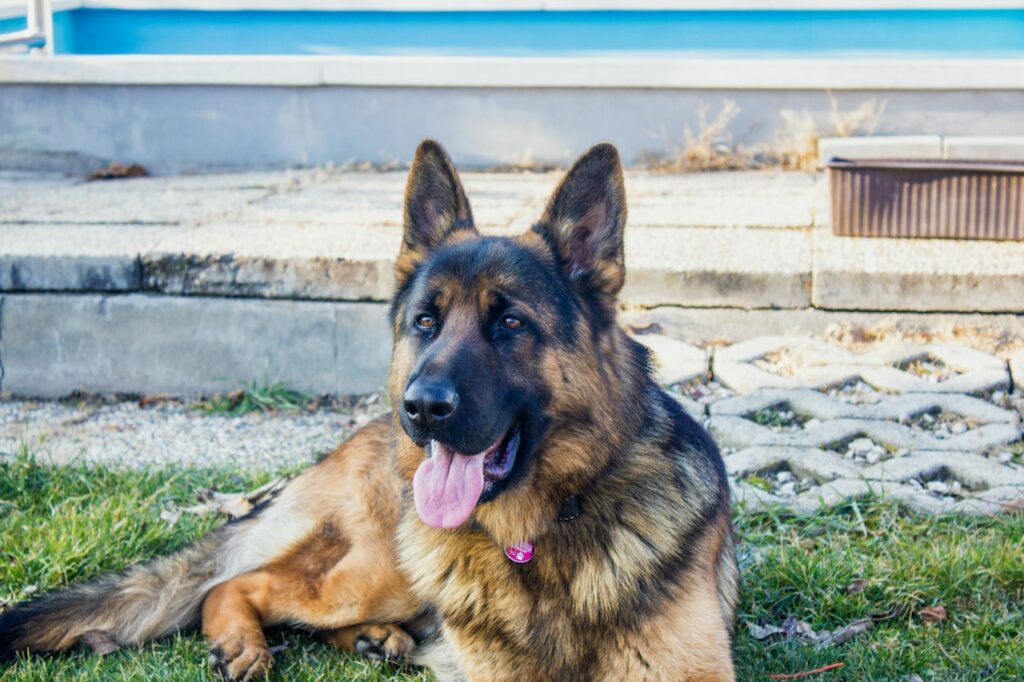
You can bathe your German Shepherd once in every one or two months to refresh their entire body and keep them hygienic.
Be careful about overbathing your GSD, since you may end up stripping off the natural oils and cause itchiness on the dry skin.
German shepherd dogs require minor details on trimming around the ears, paws, and tail to keep them spruced up and neat.
2. Ear cleaning
Cleaning your German Shepherd’s ears is essential in preventing the growth and buildup of bacteria which causes serious infections.
Use a few drops of veterinary-approved ear-cleaning solution and a soft cotton ball to wipe through the interior parts of the dog’s ears.
While on that, be sure to check for any sign of redness, rashes, bad odor, or excessive wax, since they could be an indicator of an infection.
3. Nail trimming
Trimming your dog’s nails periodically is essential in ensuring they’re comfortable when walking and they don’t develop unwanted scratching behavior.
4. Dental care
Make sure to brush your dog’s teeth with canine-specific toothpaste and soft toothbrush to prevent the rise of dental diseases and bad breath.
You can also make use of soft dental chews that help remove plaque and prevent the build-up of tartar on your dog’s teeth.
German Shepherd Exercise and Activity Levels
Activity levels
German shepherds are highly energetic dogs with natural athleticism. They can thrive on plenty of physical activities that expend their energy reserve.
A healthy mature German Shepherd can do well with 2 hours of regular physical activity every day which can be divided into different sessions with diverse activities.
Suitable activities and games for German Shepherds
The following are some of the suitable indoor and outdoor games you can engage in with your German Shepherd:
- Walking
- Running
- Hide and seek
- Search and rescue
- Tug of war
- Nose work
- Pick up time
- Agility training
- Obedience training
- Social training
Importance of Mental stimulation
- Prevents boredom, emotional distress, and depression
- Improved the dog’s mental prowess
- Enhances problem-solving abilities
- Prevents mental decline in elderly German Shepherds
German Shepherd Training and Socialization
We highly recommend that you start training and socializing your German Shepherd from a young age to ensure they mature into responsible adults.
These hardworking dogs are highly intelligent, making them show quick advancements in training with just a few repetitions.
Keep in mind that German Shepherds are naturally protective canines, so they need social training to gain confidence in different settings.
German Shepherd Living Conditions
German Shepherds are highly adaptable dogs who can flourish in various living conditions, both in town and in rural areas.
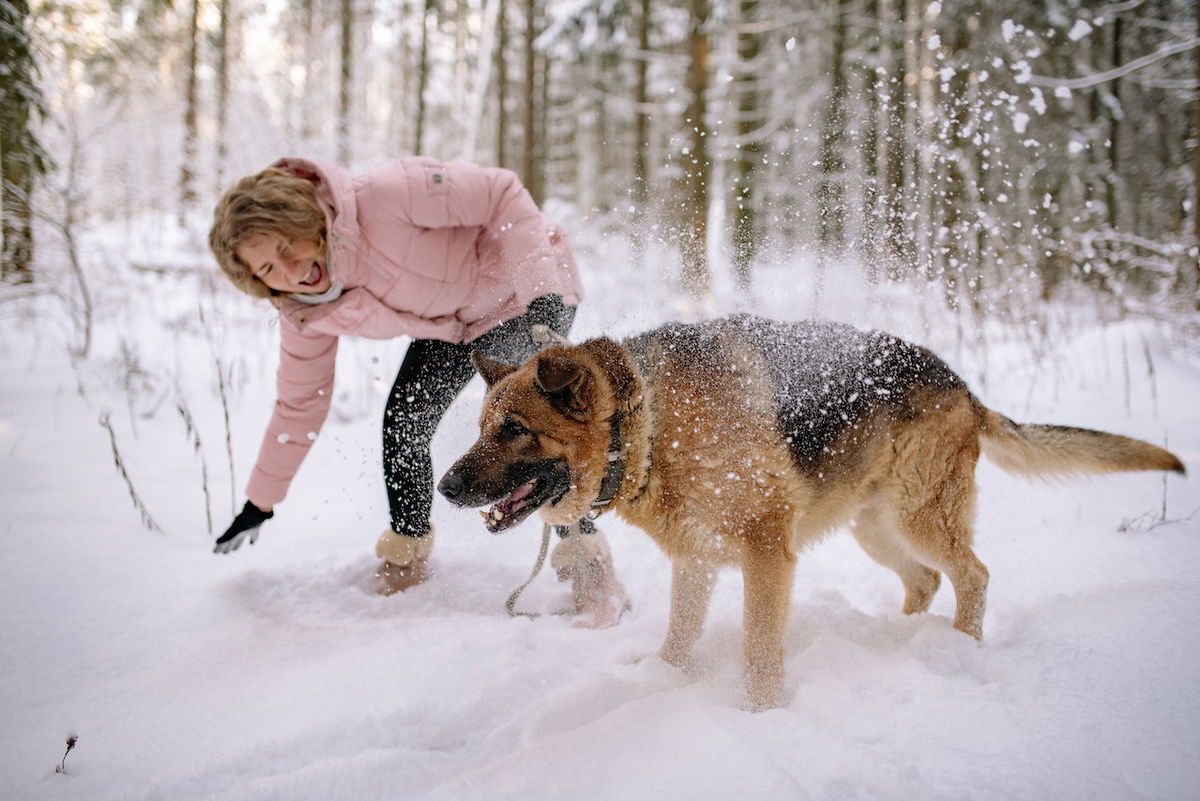
These high-energy dogs are generally not suited for small apartment blocks. A home with a spacious backyard is favorable for GSDs’ high demand for activities.
People living in apartment blocks can still own a German Shepherd but they will need to provide them with enough indoor entertainment and everyday walks to keep them in top condition.
German Shepherd Diet & Nutrition
Every GSD parent should strive to provide a well-balanced meal for their lovely canines and enough clean drinking water.
German Shepherds can thrive with a high protein diet and a generous touch of vitamins, minimal carbohydrates, and healthy fats.
German Shepherd Pregnancy and Litter Size
Expectant German Shepherd dogs have an average gestation period of 63 days.
The normal litter size varies with an individual dog, but a healthy German Shepherd can deliver between 5 – 10 puppies at once.
Various factors that affect the litter size in GDSs include the age of the mother, the health of both parents, and length of gestation.
Conclusion
German Shepherds are the epitome of canine intelligence, admirable versatility, and limitless energy – no wonder they are one of the most popular breeds in the world.
These pups can thrive in physically and mentally active environments since they need to work out their brainpower as well as the body.
We strongly suggest that you socialize your German Shepherd from a young age to build their collective skills in different settings since these dogs have protective instincts.
Laura is the founder of Furs'n'Paws. She is a also a pet writer and expert with more than 20 years of experience of working with dogs and cats. She developed a very strong love for animals at a young age. Her passion led her to establish a thriving pet sitting and dog walking business in Dubai. As an expert in pet training, behavior, and nutrition, Laura is committed to helping pet owners and pet lovers by offering high-quality information on a wide range of topics.


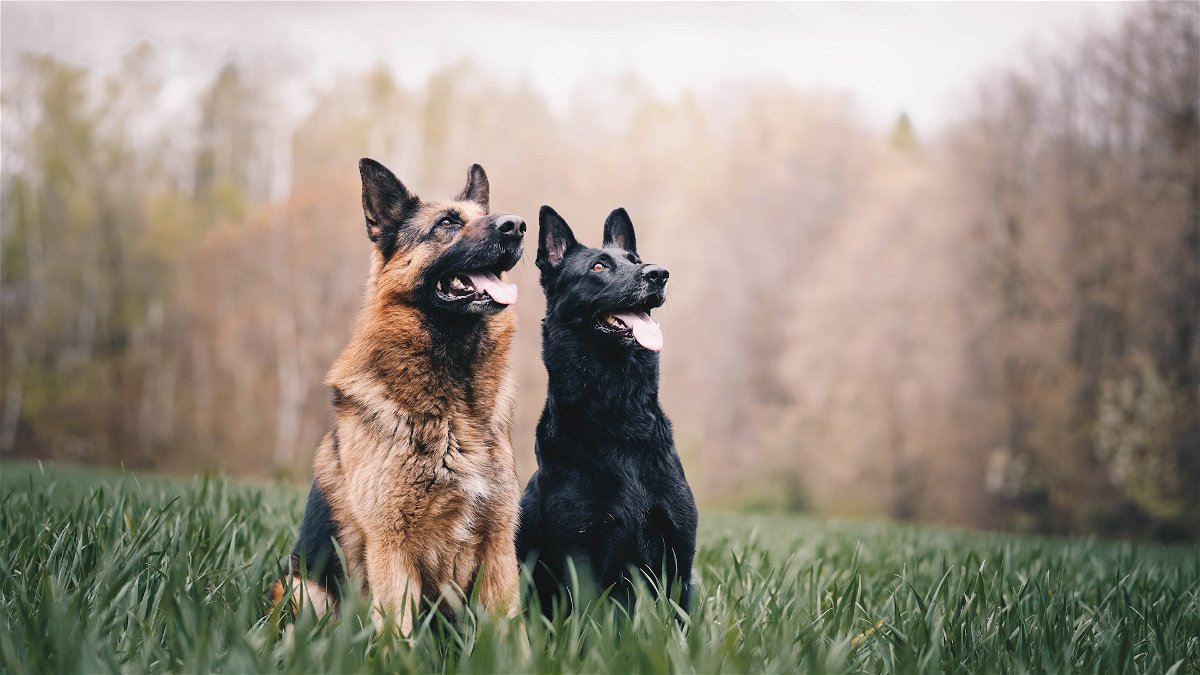
No responses yet